UPDATED: OCTOBER 1, 2024
All about threads
Thread Weight, Applications, and Techniques
Referencing our education library, you will find an article titled Thread Weight and How to Measure Threads Thickness. Using the information from that specific article as the foundation for understanding thread weight, we have defined the most common methods for determining the characteristics of how thick or thin a thread is. Let’s apply this information and turn it into knowledge of threads for three of our favorite applications--embroidery, quilting, and sewing.
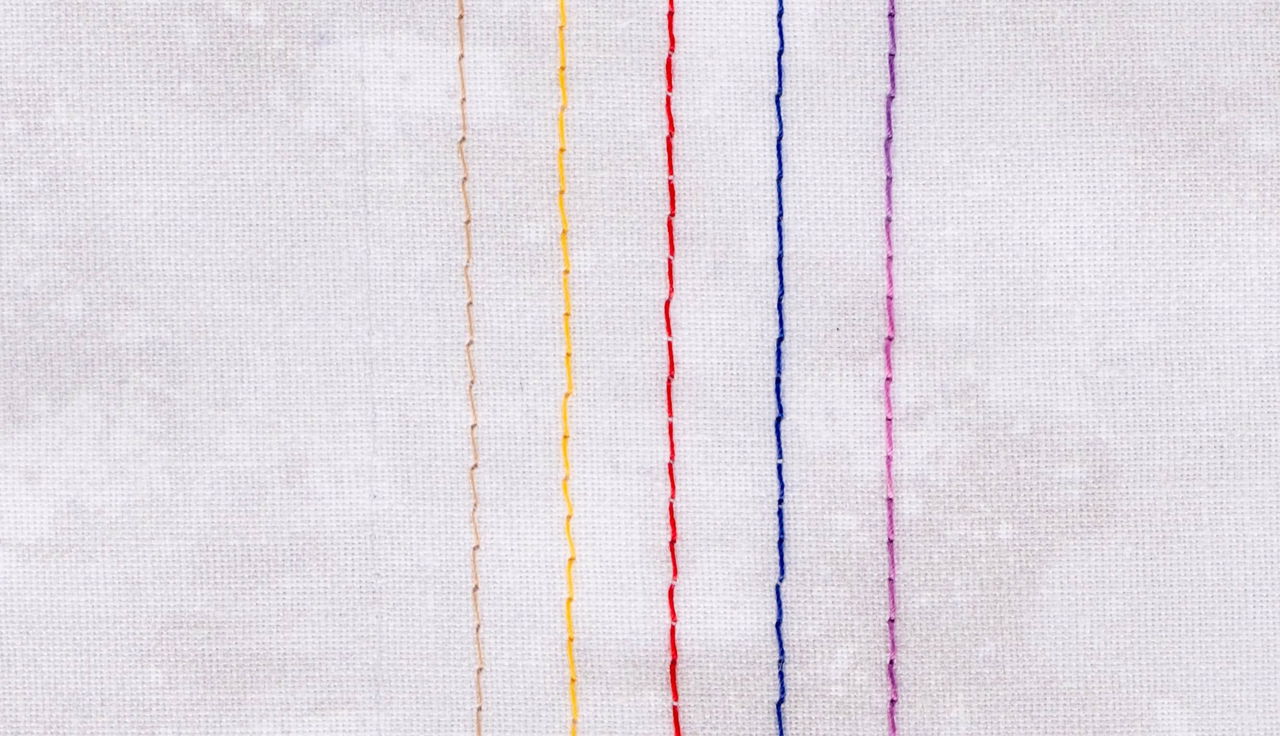
Quilting: The Quest for Perfect Stitch Balance
When it comes to quilting, it’s imperative to understand how a thread will look when topstitched onto a quilt, the physical characteristics of a piecing thread (if it’s too thick, it may cause the seams to bulk and offset points), and whether a bobbin thread will require tension adjustments due to its fine diameter (because it's a very-fine thread). These are just three considerations, but they are relatable to all quilters.
Thread weight significantly influences the final appearance of a quilt, varying with different techniques and applications. While not exhaustive, the following guidelines are widely accepted as standard.
40 wt. Threads: Quilting (Topstitching)
Quilter’s love 40 wt. threads! A 40 wt. thread is visible and will show off the decorative topstitching on a quilt. Forty-weight threads are also thick enough for variegated color patterns. Variegated threads are threads with multiple colors dyed, typically in a set interval, such as 1”. A 40 wt. thread sits right at the midpoint on the thick-to-thin spectrum, where quilters want their decorative stitching to be visible without commanding the entire quilt design.
Majestic is our 40 wt. 3-ply extra-long staple thread made from Egyptian cotton designed for quilting on home and longarm machines. Available in solid and variegated colors, its matte finish and bold color tones result in visible stitches.
QuiltMaker is our 40 wt. poly-wrapped poly core thread that combines the strength of filament polyester with the softness of spun fibers, ensuring durable, long-lasting quilts.
50 wt. Threads: Piecing and Quilting
When piecing (sewing your quilt blocks together), quilters often use a 50 wt. thread. Dream Seam extra-long staple cotton thread is made from Egyptian-grown cotton and has three plies—50 wt. 3-ply. A tight twist results in a 3-ply thread that is nearly the same diameter as 50 wt. 2-ply threads, resulting in flat seams and reducing bulk. Dream Seam is available in Class 15 and L-style prewound bobbins for convenience—say goodbye to winding your bobbins!
Our Perfection 50 wt. 3-ply polyester thread has a gentle fluff-like texture that gently grabs the fabric with each stitch. Both of our aforementioned thread lines consist of three individual strands, called plies, that are tightly twisted together to create the final 50 wt. thread, thus the 50 wt. 3-ply classification.
A 50 wt. thread offers an ideal balance of strength and subtlety. It sits just past the midpoint on the thick-to-thin spectrum, leaning towards finer threads. This weight is the most popular choice for piecing and quilting (topstitching) when the thread is visible without dominating the backing fabric or quilt block designs.
Piecing with a low-lint 50 wt. thread, such as Dream Seam or Perfection, helps to keep your seams flat.
60 wt. and extra-fine threads: Bobbins and Detail Quilting
A 60 wt. thread and threads labeled as 'extra-fine' fall on the thinner end of the spectrum, making it ideal for applications and techniques where subtlety is key. These fine threads are perfect for use in the bobbin due to their excellent flexibility and ability to blend into fabrics. Quilters frequently choose fine threads for topstitching on quilts to highlight the backing fabric and quilt block patterns without the distraction of a heavier thread. Fine threads are highly favored for machine appliqué, stitch-in-the-ditch, and stippling. A thin thread blends into backing fabric better than a thick thread does.
Precision is our top choice for machine appliqué, bobbin thread, English Paper Piecing, and detail quilting. It is a thin, smooth 60 wt. 2-ply polyester thread that blends effortlessly into your fabric. Precision is also available in Class 15 and L-style prewound bobbins.
Invisible Thread is our extra-fine polyester monofilament thread designed for nearly invisible stitches. It is excellent for appliqué, stitch-in-the-ditch, and free-motion quilting.
Embroidery: Shine and Detail
Embroidery threads emphasize sheen and presence. The thread is meant to, even designed to be seen when densely stitched. Most embroidery threads are 40 wt. 2-ply (the technical measurement system used for embroidery threads is the Denier system; specifically, the most common embroidery threads tend to be 120d/2 or 135d/2) provides a perfect balance between visibility and detail. Digitized designs are programmed using the 40 wt. standard for optimal fill and stitch density. A 40 wt. 2-ply high-sheen embroidery thread should be strong enough to withstand the fast, high-speed stitching of a 10-head embroidery machine but fine enough to capture details.
Embroidery threads are often made of polyester or rayon (sometimes called viscose or viscose rayon). For many decades, rayon has been the prominent fiber used for embroidery. Thanks to its low cost and high sheen, the industry quickly adopted it. However, the production of viscose rayon is fraught with concerns, including exposure to harmful chemicals that could pose environmental and health risks; hence, it is heavily regulated. Most rayon threads aren’t colorfast and can fade with UV exposure and washing detergents.
As the industry continues to shift away from viscose rayon for embroidery, trilobal polyester threads are gaining popularity. Trilobal polyester fibers are available in a high-strength, high-sheen combination, making them a strong contender for the best embroidery thread.
Elite is our 40 wt. high-strength, high-sheen polyester thread for embroidery. It has the benefits of being able to withstand the tight tension settings of commercial embroidery machines while retaining flexibility and softness.
For more delicate embroidery, 60-wt. threads may be used for more delicate embroidery designs, such as lace embroidery. This finer thread isn't usually high sheen but provides much denser stitch patterns and intricate details.
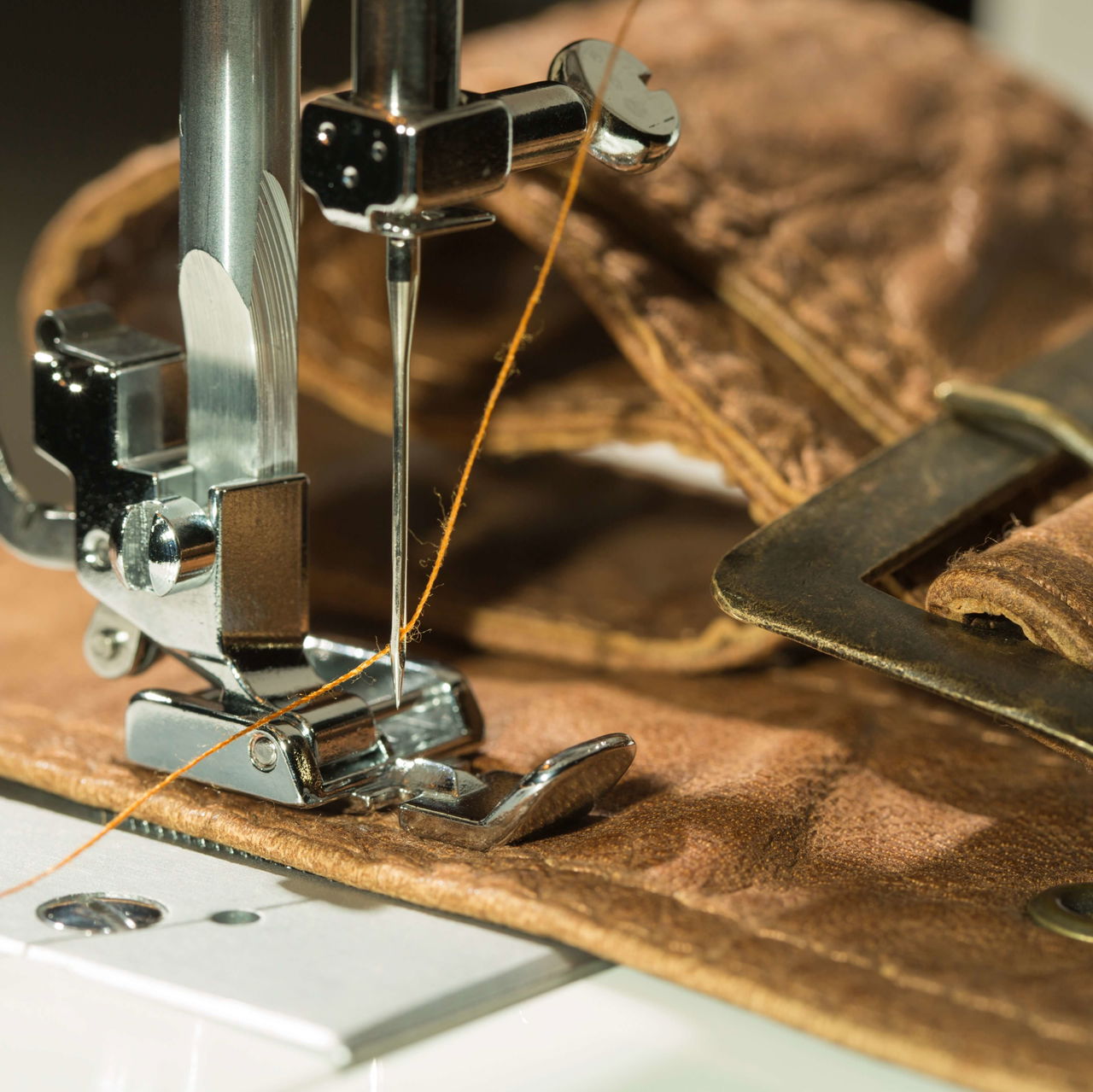

Upholstery threads are thick and typically coated to reduce friction.
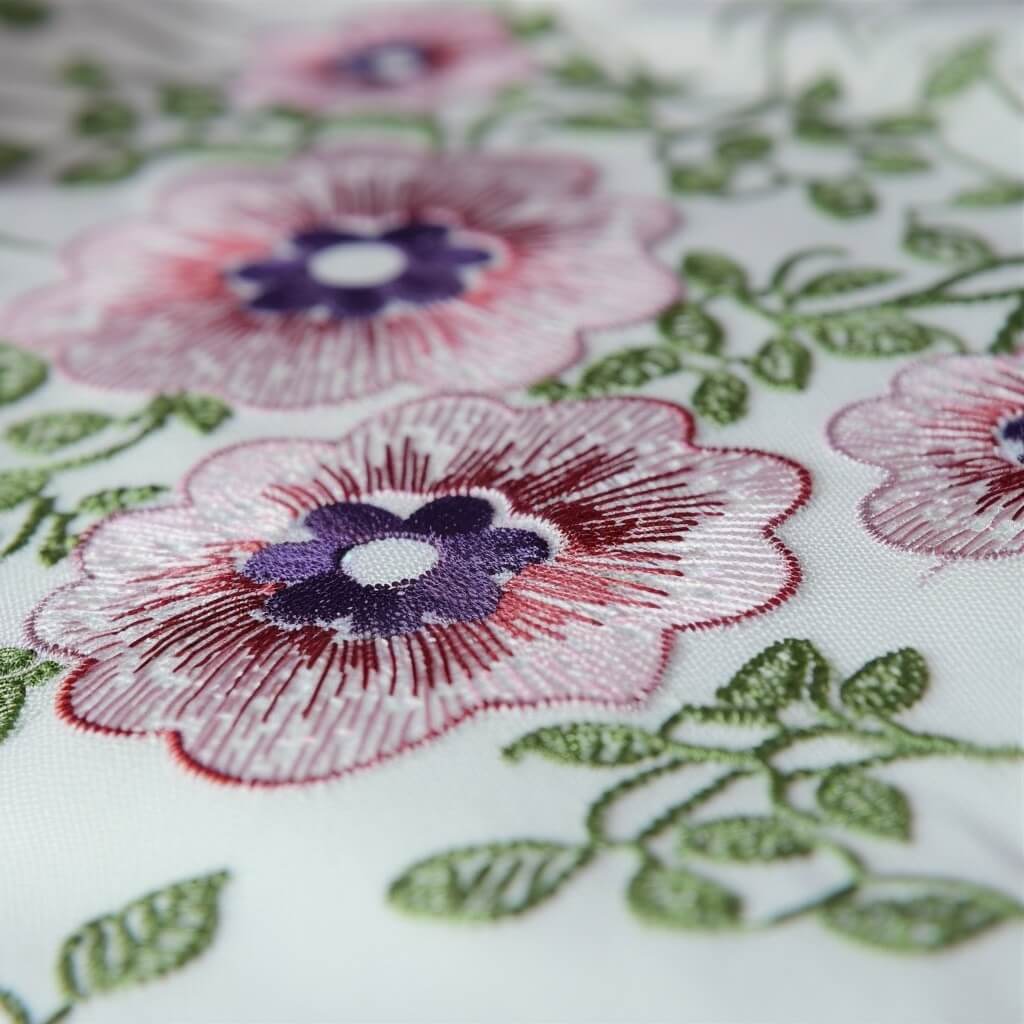

Forty-weight threads are a popular thread weight for embroidery.
Sewing: Not Your Grandmother’s Thread
Sewing threads used to mean whatever was on hand. Today, threads are designed precisely for sewing clothes, crafting, rolled hems, and more. A 50 wt. Polyester thread is an excellent choice for general sewing tasks. For fine sewing, think of home decor, a 60 wt. Polyester will keep the seams together and blend into the backing fabric without question.
Woolly Nylon is a must-have for the looper thread if sewing on a serger, especially for garment construction. Woolly Nylon is a unique thread--it’s not wound or twisted to form a tightly wound thread; it’s textured. This makes it stand out for its high elasticity and soft texture, traits that are especially beneficial for sewing knit fabrics that require stretch and flexibility. This thread adapts exceptionally well during the sewing process, stretching to accommodate the flex in fabrics. It is ideal for use in applications such as swimwear, lingerie, and activewear, where seams must endure constant motion and frequent stretching.
Upholstery: Strength Above All
When it comes to upholstery sewing, thread strength is paramount. Upholstery projects require heavy-duty threads that can withstand stress and strain. Upholstery threads must be able to form a stitch through an abrasive canvas, resist friction and heat when stitched through leather, and pass through an industrial needle at high speeds. A Tex 70 or Tex 90 thread (typically called a #69 or #92 bonded thread) are the two most common thread weights for upholstery sewing, providing the necessary strength for seams to withstand wear and tear. These threads are the bodybuilders of the thread world—bulky, strong, and ready to take on any challenge.
Most threads used for upholstery are made from nylon or polyester and undergo a special coating process during manufacturing called bonding. These bonded threads deliver excellent resistance to friction and heat while stitching and are durable.
Choosing the Right Thread Based on Application or Technique
Choosing the right thread for your project depends on understanding thread weight and how differently weighted threads apply to your specific wants and needs.
For quilting, a 50 wt. thread is ideal for piecing your quilt blocks together, while a heavier 40 wt. thread is often used for decorative quilting (topstitching). When it comes to detail quilting, such as stippling, a very-fine thread, such as a 60 wt. is an excellent choice.
For embroidery, a 40 wt. high-strength, high-sheen polyester thread is an excellent choice. Most digitized designs are created with a 40 wt. (or, if written using denier, 120d/2 or 135d/2) thread in mind.
For upholstery, a Tex 70 (size 69) and Tex 90 (size 92) are the two most popular sizes. While there are many different sizes of upholstery threads, the use case for each size is heavily influenced by the material being sewn, whether the sewn product will be exposed to UV rays, and how much stress will be placed on the seams. Bonded nylon and bonded polyester are the two industry standards for sewing upholstery. There are specialty upholstery threads, such as kevlar or Nomex threads, that have incredibly high heat resistance and tensile strength.
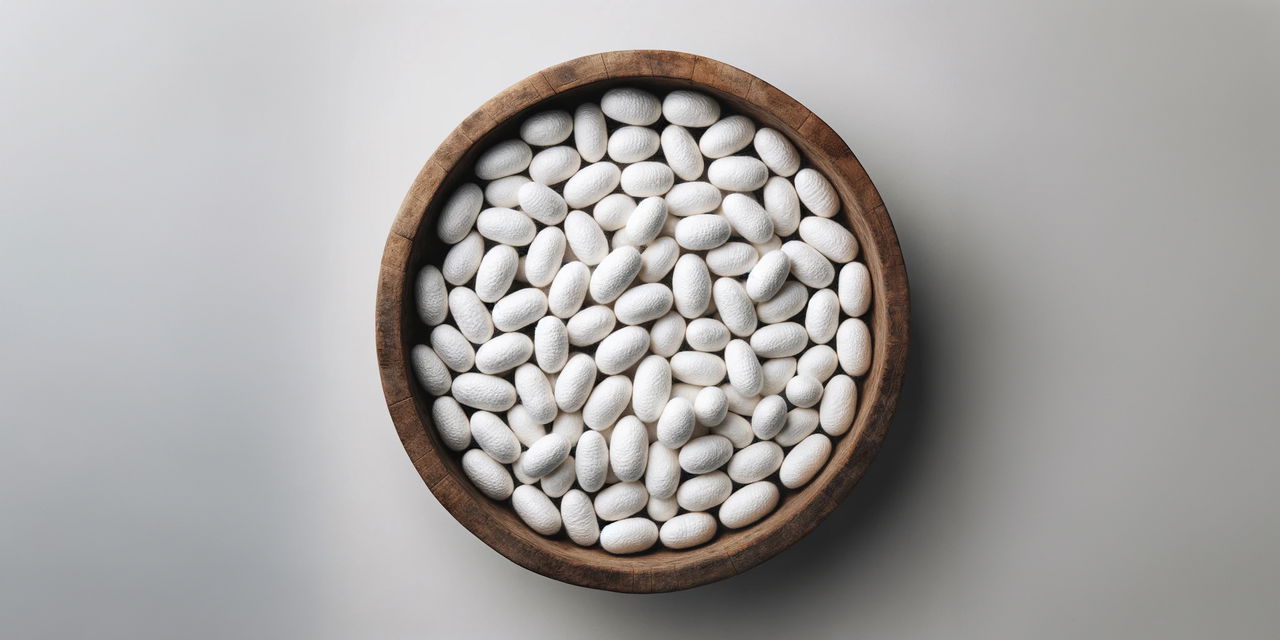
Conclusion
Thread weight might seem like a nerdy detail of your chosen craft, but understanding it can make a significant difference in the outcome of your stitched project. Whether quilting, embroidering, or sewing, selecting the right thread for the project and understanding how thread weight may affect it will help your quilt, clothing, purse, belt, or cowboy boots look beautiful and stand the test of time.
Happy stitching!
EDUCATION ARTICLE BY BOB PURCELL
PUBLISHED ON May 29, 2024
More Silk Thread Articles
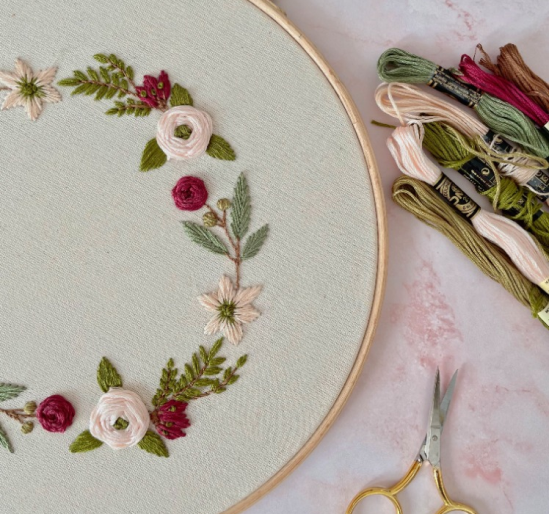
Lorem ipsum
6 Things You Didn’t Know About Silk
Lorem ipsum dolor sit amet consectetur. Risus volutpat venenatis diam eu.
read More

Lorem ipsum
Material Guide: How Sustainable is Silk?
Lorem ipsum dolor sit amet consectetur. Risus volutpat venenatis diam eu.
read More

Lorem ipsum
How to Build Better Silk
Lorem ipsum dolor sit amet consectetur. Risus volutpat venenatis diam eu.
read More